I. Stravinsky ballet "Spring sacred"
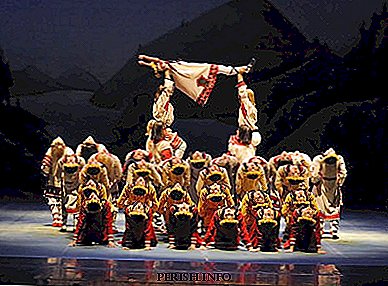
From scandal to a masterpiece - such a predictable thorny path in the history of world art was Igor Stravinsky's ballet "Spring is Holy". "The composer wrote the score, to which we will grow only in 1940," said one of the theater critics after the premiere, which made the Honorable Parisian public experience a deep cultural shock. These words were prophetic. Fantastic fusion of talents of three geniuses - Stravinsky, Roerich, Nizhinsky - spawned an absolutely innovative performance, possessing the most powerful energy and such a force of influence on the viewer, that its secret has not yet been solved.
The summary of the Stravinsky ballet "The sacred spring" and many interesting facts about this work read on our page.
Characters | Description |
| The chosen one | girl chosen as a victim |
| The Oldest Wise | head of elders-forefathers |
| Aged, boys, girls | |
Summary
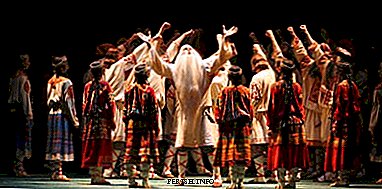
In the "Spring Sacred" no pronounced storyline. No wonder the ballet has the subtitle "Pictures of the Life of Pagan Russia", given to him by the author.
On the eve of the Sacred Spring holiday, symbolizing the awakening of nature and a new life, the tribe gathers at the sacred kurgan. Boys and girls lead round dances, have fun, dance. Fragments of everyday life and work are embodied in their dances, in movements it is unmistakably guessed how young men plow the earth, and girls spin. Gradually, the dances develop into a frenzied dance, and then the young men, wanting to boast of strength and prowess, start the game of the two cities. The general orgy is disturbed by the appearance of the elders and their head - the Oldest-Wise. The Oldest Wise appeals to the prudence of the young men, trying to reassure them. The fun subsides, and the girls gather around the fire. They know that, on this night, according to the rite, one of them must be sacrificed to the god of Spring and the forces of nature so that the earth should be generous to people and make them happy with their fertility and rich harvest.
After a series of rituals, the Chosen One leaves the circle of girls, the one who is destined to die for the good of her fellow tribesmen. She begins a sacred dance, the pace of which is constantly increasing and, eventually, the weakened girl falls dead. The sacrifice has been made, and the earth around is blossoming, spring comes, promising people warmth and grace.
| Duration of performance |
| I Act |
| 30 min. |
A photo:
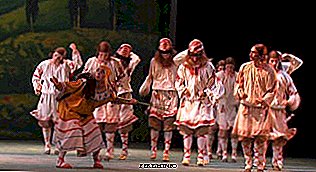
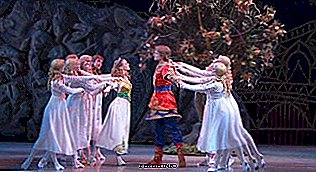
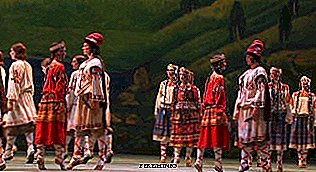
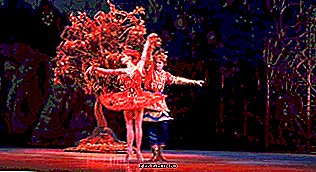
Interesting Facts
- "Sacred Spring" took an honorable place among 27 pieces of music recorded on a gold disc, which in 1977 was laid in the Voyager spacecraft. After completing the research mission, the ship was to endlessly travel across the intergalactic expanses, and 27 specially selected musical masterpieces were to fulfill the function of the cultural message of earthlings in case of a possible meeting of the ship with other civilizations.
- In the Swiss town of Clarances, where Stravinsky wrote music for ballet, one of the streets is called Sacred Spring Street.
- In the version of one of the librettists of the “Spring of the Holy” by Nicholas Roerich, the ballet was to be called the “Great Sacrifice”.
- "Spring sacred" was the last work of Stravinsky, written by him in Russia.
- The Cuban writer Alejo Carpentier, a big fan of music, has a novel called Holy Spring.
- Many of the original costumes of the characters of the "Sacred Spring", as well as their sketches, were sold at auction Sotesby, got into private collections, and some even worn in everyday life. So, one of the costumes was worn by British actress Vanessa Redgrave to parties.
- During his life, Stravinsky twice rewrote separate passages from the "Sacred Spring". In 1921, he undertook a musical reconstruction of the ballet for a new ballet, and in 1943 he adapted the Great Sacred Dance for the Boston Symphony Orchestra.
- Currently about 50 new versions of ballet have been created.
- Walt Disney chose the music for the cartoon "Fantasia" to illustrate the process of the origin of life on earth.
- In Saratov, in the Radishchev Museum there is a picture of Nicholas Roerich "Sacred Spring". It is a sketch of the decoration of the “Great sacrifice” to the second ballet painting.
- In 2012, in Kaliningrad in the Cathedral, ballet music was performed by Stravinsky for piano four hands. The masterpiece was performed in organ performance and accompanied by light and color effects.
History of creation
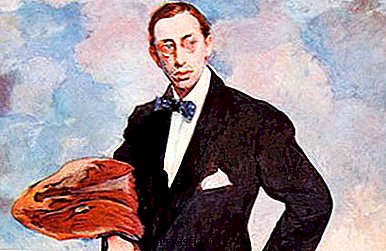
The story of the emergence of the "Sacred Spring" contains many contradictions, and the most important of them is who should be considered the "godfather" of the ballet. Libretto "Spring" was developed by the composer Igor Stravinsky and the artist Nikolai Roerich in close co-authorship, but in his later memoirs and interviews everyone claimed that he was the one who had started the birth of the masterpiece. According to Stravinsky, the idea of the future ballet came to him in a dream. The image of a young girl circling in a frenzied dance before the elders and, eventually, falling in exhaustion, was so vividly imprinted in the composer's mind that he once told Roerich about this dream, with whom he had friendly relations. Stravinsky knew about Roerich's passion for paganism, that the artist was studying the ritual culture of the ancient Slavs, and offered to work on the libretto of "The Holy Spring." However, Roerich subsequently categorically denied the semi-mystical version of events outlined by a friend and co-author. According to him, in 1909, Stravinsky came to him specifically with a proposal for cooperation - he wanted to write a ballet. Roerich offered the composer two plots to choose from - one was called "Chess Game", and the other was the future "Sacred Spring". Confirmation of the artist's words can serve as archival documents, according to which Roerich was paid a fee as the author of the libretto of "The Sacred Spring".
Anyway, in 1909 work began on ballet. She went intermittently, because during this period Stravinsky was engaged in composing Petrushka, another ballet on Russian themes, commissioned by the famous impresario Sergei Dyagilev for Russian Seasons. Only in 2011, after the premiere of Petrushka, did Stravinsky return to his plan. As a result of a new meeting with Roerich in the fall of 1911 in Talashkino - the estate of the famous patron of arts Princess M.K. Tenisheva - the idea of a ballet took shape completely. In the latter version of its structure was limited to two actions - "Kiss the earth" and "Great sacrifice."
The staging of the performance, which was supposed to be the “nail” of the next “Russian seasons”, Dyagilev entrusted to the most brilliant dancer of his troupe Vatslav Nizhinsky. Rehearsals were difficult. In his striving to embody the world of pagan Rus on the stage and convey the emotions that possess the participants of the ritual act, Nijinsky abandoned the usual plastics of classical ballet. He forced the dancers to turn their feet inward and perform movements on straight legs, which created the effect of coarse clumsiness, primitiveness. The situation was strained by the music of Stravinsky, which was unusually difficult for the ballet ear. So that the troupe did not get off of the rhythm set by the composer, Nijinsky counted measures out loud. Among the artists matured discontent, and yet the work on the ballet was brought to the end.
Famous productions

Interest in the "Russian Seasons" in Paris was huge, so the premiere of the new performance, held in May 1913 at the Theater des Champs Elysees, began with a full house. But already the first measures plunged the venerable public into shock. The audience was instantly divided into two camps - some admired Stravinsky's innovation, others began to boo both music and Nijinsky's revolutionary choreography. In the hall began bacchanalia. The artists did not hear the music, but continued to dance to the loud score of Nijinsky, who beat the beat behind the scenes. This was the first acquaintance of the public with the main ballet of the 20th century, as they would later call the "Holy Spring". But it will be much later. And then the performance endured only six shows, after which it disappeared from the repertoire of the Dygilev troupe. In 1920, at the request of Dyagilev, the young choreographer Leonid Myasin put it again, but this production went unnoticed.
The real interest in the "Holy Spring" broke out only in the second half of the XX century. In 1959, the world saw the "Spring sacred" in choreography by Maurice Bejart. The main thing that distinguishes Bezharov's interpretation from others is the fundamentally different semantic dominant. Bejart's ballet is not about sacrifice, but about the all-consuming passionate love between a man and a woman. The prologue of the play, Bezhar, called the "Initiation to Stravinsky", using the rare record with the composer's voice in the play.
Another surprise for the ballet fans was presented in 1975 by the German dancer and choreographer Pina Bausch, who made an attempt to return to the ritual meaning of the dance, to its origins, which are rooted in ritualism.
The work on the “Sacred Spring” for the famous creators of the Theater of Classical Ballet Natalia Kasatkina and Vladimir Vasilev became a landmark. They became the first domestic choreographers after 1917 to venture into the work of Stravinsky. Kasatkina and Vasilyev not only came up with a completely new choreographic solution, but also largely reworked the libretto by introducing the new characters - Shepherd and Possessed. The performance was staged at the Bolshoi Theater in 1965. The premiere was danced by Nina Sorokina, Yuri Vladimirov and Natalia Kasatkina herself.
In 1987, the "sacred spring" in its original form was resurrected by the spouses Millicent Hodson and Kenneth Archer, who for many years collected the lost choreographic material and elements of the set design of the play. The premiere of the restored "Holy Spring" was held in Los Angeles. In 2003, this performance was moved to Petersburg on the stage of the Mariinsky Theater.
In 2013, in honor of the 100th anniversary of the "Holy Spring", the Mariinsky Theater showed another version of the ballet staged by the modern German choreographer Sasha Waltz. In her "Spring ..." the feminine principle is glorified, and the beauty of dancing has nothing to do with the deliberate awkwardness with which Nijinsky’s performance once shocked the audience.
All these and many other productions, which differ from each other in completely diverse approaches to form and content, are united by one thing - the magical power of Stravinsky’s music. Everyone who has had a chance to get acquainted with the history of the creation of this truly epochal ballet has an overwhelming desire to see it with his own eyes. Paradox: a century after birth "Sacred spring"conceived by the authors as the worship of the primitive power of the earth and an appeal to the archaic, sounds more and more modern, continuing to stir the minds and hearts of the new generation of choreographers, dancers and spectators.
We are pleased to offer ballet dancers and a symphony orchestra for the performance of numbers and excerpts from the ballet "Holy Spring" at your event.

Leave Your Comment